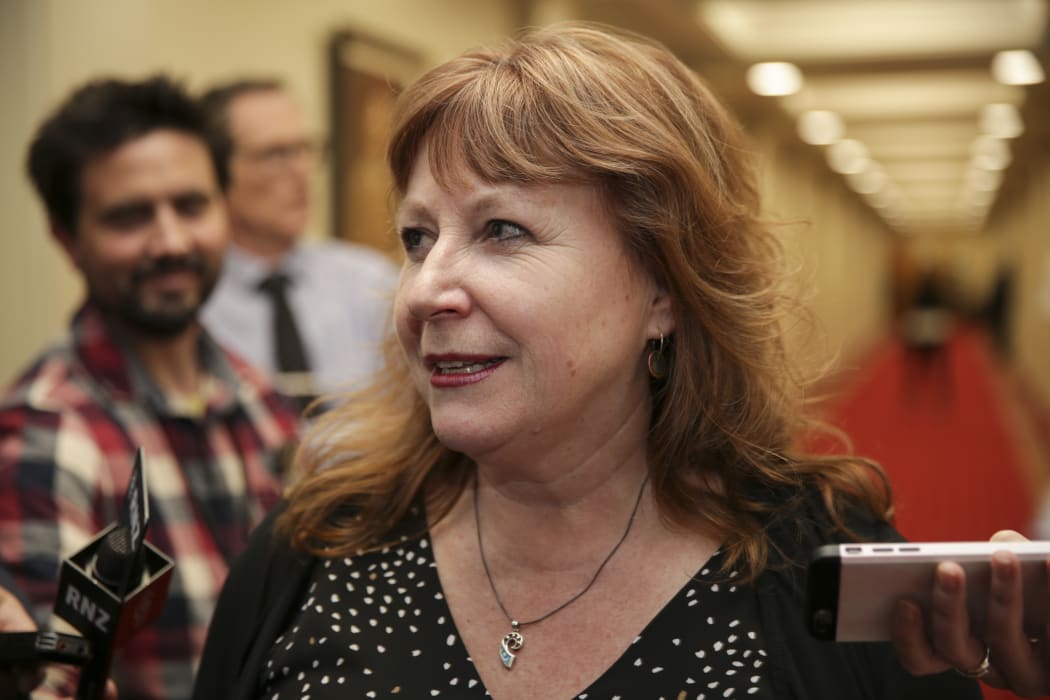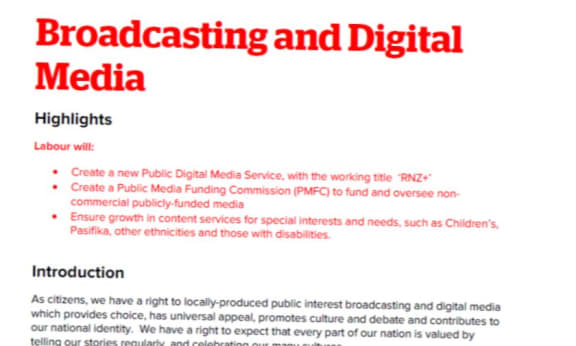The three parties now in our government went into the election with different ideas for broadcasting and the media. Mediawatch asks the new minister Clare Curran: what’s the plan now?

The new Minister for Broadcasting, Communications and Digital Media, Clare Curran, wants a funding boost to deliver improved public service media from 2018. Photo: RNZ / Richard Tindiller
When PM-in-waiting Jacinda Ardern and her deputy Winston Peters unveiled the coalition agreement last Tuesday, the policy priorities were clear for big-ticket items like regional development, education, health and welfare.
But there had been no mention of broadcasting or the media, even though all three governing parties set out specific policies before the election.
Labour promised $38 million next year for RNZ and New Zealand on Air to “strengthen New Zealand’s identity" and provide "sustainability for the industry.”
The Greens also wanted to boost funding of RNZ and create a fund for journalism to be administered by Creative New Zealand. New Zealand First wanted TVNZ2 to become commercially operated state-owned enterprise to subsidise an ad-free TVNZ1, which would join up with RNZ under a new crown entity - the Public Media Commission.
New Zealand First also wants sport of national significance available on free-to-air TV and New Zealand First MP Tracy Martin hinted at quotas for political coverage, in a video released during the campaign.
That would be anathema to news organisations, but which policies will the new three-way government actually pursue?
On Wednesday, MP for Dunedin South Clare Curran was named as the new Minister for Broadcasting, Communications and Digital Media. She was Labour's spokesperson on those issues for several years in opposition.
"It's Labour's broadcasting policy that will be my first priority," Clare Curran told Mediawatch.
Political coverage quotas? Sport of national significance on free-to-air TV?
"I'm not saying they shouldn't be discussed and thought be given to them but they aren't priorities, that should tell you something," she said.
At a conference organised by the journalists' union E Tū earlier this year, Clare Curran said it was "shocking" New Zealand invested far less per capita in public service media than most comparable countries.
"There's no value that's been seriously put on it. The governance has to be thought through and so does its financial sustainability so it's not at the whim of the next minister who comes through."
Clare Curran said the new government's investment in public service media would be overseen by a new Public Media Funding Commission (PMFC).
The government already has a broadcasting funding agency New Zealand on Air. Why not just fund broadcasters directly and make them accountable for the money, like they do for the BBC in the UK and the ABC in Australia?
"Going cap in hand to a minister every budget cycle is not an ideal way to deliver quality public service media. The idea is that it works in a longer cycle to make [funding] long-term and sustainable," said Clare Curran.
"I want to create something that is hard to dismantle and independent of government interference," she said.
RNZ on TV
Clare Curran said the bulk of the new investment was likely to go to a planned new service under the working title RNZ+.

Labour's six-page media manisfesto. Photo: screenshot
Labour's broadcasting manifesto describes it as "a non-commercial, audio-visual and multi-platform entity, with its services expanded to include a free-to-air non-commercial television service ... progressively developed from Radio New Zealand."
Clare Curran told Mediawatch she wanted a full TV channel run by RNZ on Freeview offering more news and current affairs, children's content and drama.
But that will be hard to plan because the budget for it has not been set by the yet-to-be-established PMFC.
"It's early days and conversations haven't been had yet about what's achievable," she said, adding that there was time for planning before the next budget in May.
Not everyone in the media industry is in favour.
When the policy was first announced, Fairfax NZ chief executive Sinead Boucher questioned "piling more money into state-owned media." She suggested putting extra funding into a contestable fund for all media companies.
Clare Curran said extra funding for New Zealand on Air was a "strong signal" local content was important on all platforms.
"We acknowledge how hard it is to innovate. We have seen a lot of disruption in our media ecosystem. We'd be looking at New Zealand on Air being able to expand what it does to support that," she said.
What's TVNZ for?
The previous Labour-led government failed to establish public television with the TVNZ Charter and the non-commercial channels TVNZ 6 and 7. This time the government has cut its own TV broadcaster out of plans for a new public channel.
In the last annual review of TVNZ, Clare Curran asked TVNZ chief executive Kevin Kenrick if funding one channel as a public broadcaster was a good idea.
He was non-committal.
"The mandate that we’re operating in is very commercially focused and it’s very clear what’s required to deliver against. I think any shift from that, what we would ask for is that it is equally clear even if it is different," he replied.
Labour's policy says TVNZ will remain in public ownership and continue to run on commercial lines.
What's the point of owning a not-very-profitable TV broadcaster if you don't use it to serve the public?
"I acknowledge that is an anomaly," said Clare Curran.
"The alternative could have been to split up TVNZ but the mechanics of doing that would be nearly impossible. To turn it into a public broadcaster would have been difficult culturally and resulted in battles and a lack of value for the taxpayer," she said.
"TVNZ has a commercial mandate. I will be talking to them about continuing down this path," she said.

